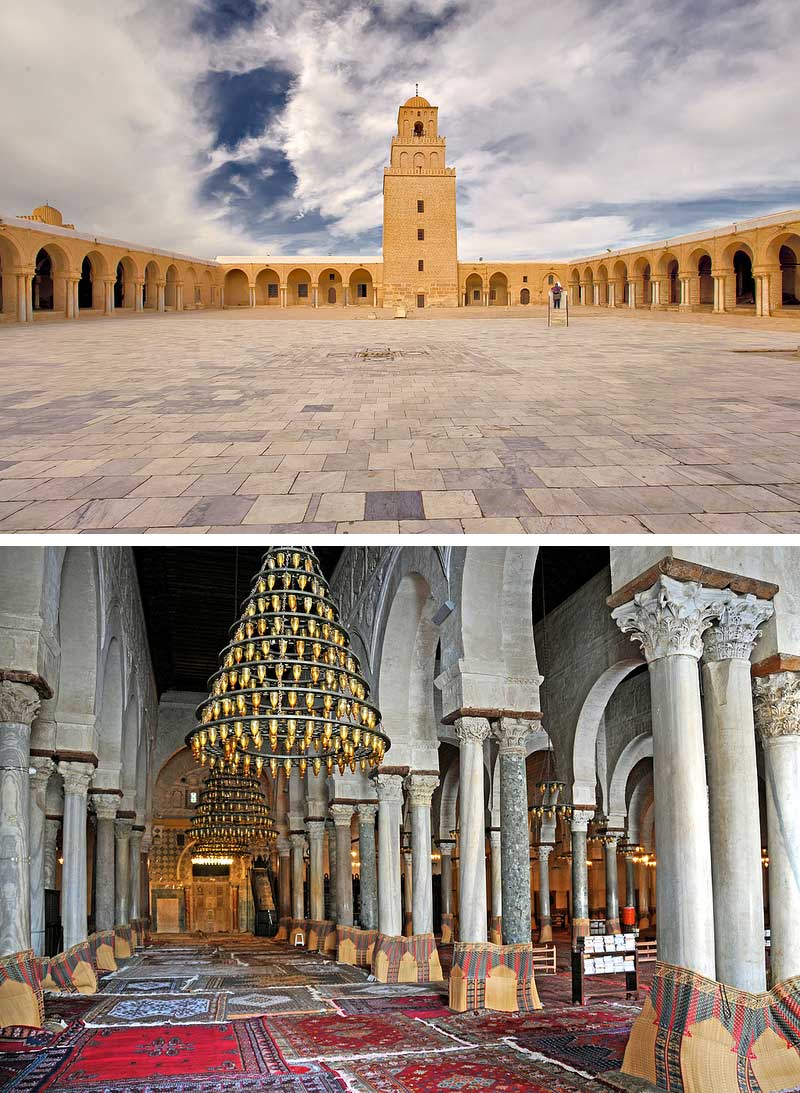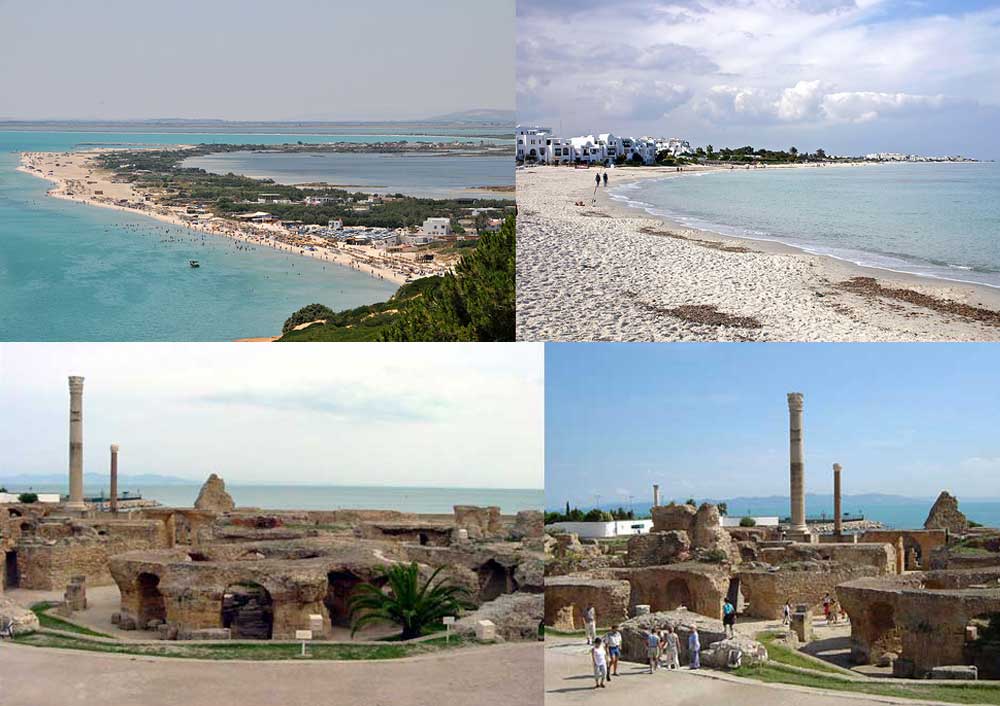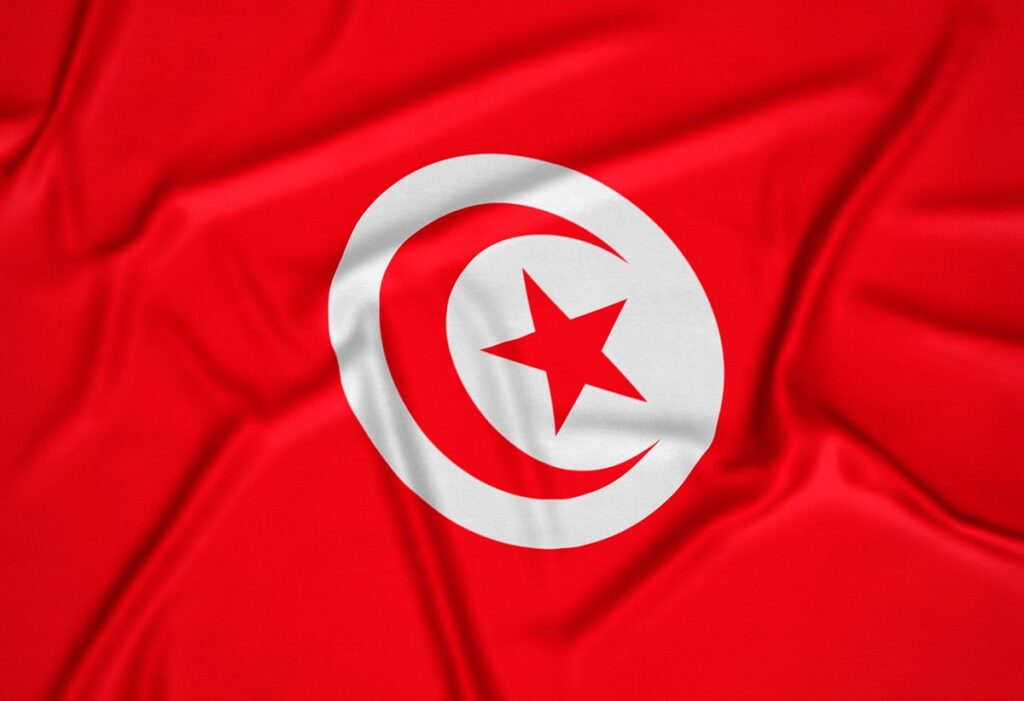1. Cani Islands: Tunisia is Africa’s northernmost country, with the Iles Cani (“Dog Islands”) off the city of Metline as Africa’s northernmost point
2. Population composition: The vast majority (98%) of Tunisia’s population are Arabs and Berbers. In addition, there are approximately 1% Europeans (mainly French and Italians) and 1% others (mainly Jews)
3. Gastronomy: The national dish of Tunisia is couscous. Tunisian cuisine mainly uses fish, seafood, olives, honey, vegetables and characteristic spice blends from North Africa
5. Festivals: There are a number of festivals in Tunisia, including: Carthage Film Festival, Sahara International Festival, Tabarka Jazz Festival and Sbeitla’s Spring International Festival

Tunesiens lange kystlinje ud mod Middelhavet (øverst) i kombination med det varme vejr gør landet til en eftertragtet turistdestination. Den historiske by Karthago (nederst) tiltrækker også mange turister
6. Tourist attractions: Tunisia’s long Mediterranean coastline stretches 1,148 km. Combined with the country’s warm weather, this makes the coastline one of the main tourist attractions in Tunisia. Another major attraction is the city of Carthage, founded by Phoenicians in 814 BC and later the center of several great empires. Today, the city is a UNESCO World Heritage Site.
7. Kairouan: Along with Mecca, Medina and Jerusalem, Kairouan in Tunisia is one of the holiest cities in the Islamic world. The city was founded by Arabs in 670 AD and over time became an important center of Islamic learning. The city has therefore long attracted Muslims from many parts of the world and is today Tunisia’s 6th largest city with 565,000 inhabitants. Kairouan is also a UNESCO World Heritage Site
8. The Ottoman Empire: In 1574, the Turks conquered Tunisia and the country became part of the Ottoman Empire. In the late 19th century, Tunisia was hit by a deadly combination of plague and famine, while political and social reforms took place in the Ottoman capital
9. French rule: In 1869, Tunisia declared bankruptcy and was taken over by an international commission. In 1881, France invaded the country and made it a French protectorate, although Italy was not happy with this solution. Since then, the French and Italians have always been the largest European groups in the country
10. Independence: Tunisia gained independence from France in 1956 under Habib Bourguiba, who later became Tunisia’s first president. Since then, the country has only had 2 presidents: Zine El Abidine Ben Ali and Moncef Marzouki (current)
11. Today: The Tunisian Revolution started on December 17, 2010, when 26-year-old greengrocer Mohamed Bouazizi set himself on fire. His death triggered a wave of protests in the Arab world, also known as the Arab Spring, which led to the resignation of several presidents in Arab countries (including Tunisian President Zine El Abidine Ben Ali). The backdrop was high unemployment, inflation, corruption, poor living conditions and a lack of various political freedoms such as freedom of speech

Tunisia’s long coastline on the Mediterranean Sea (top) combined with the warm weather makes the country a popular tourist destination. The historic city of Carthage (bottom) also attracts many tourists





